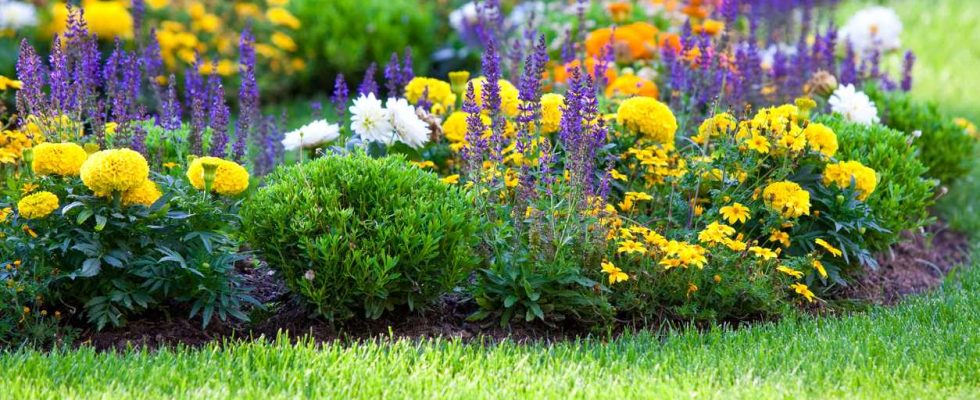
Definition: a perennial plant, what is it?
The main characteristic that distinguishes a perennial plant from biennial or annual species is its longevity. Indeed, she can live for several years. This is mainly due to the fact that only the plant freezes, but the roots remain in place. From spring, the plant recovers quickly.
When it comes to a plant with evergreen foliage, it is present all year round in your garden. The others lose their leaves and only reappear during sunny days. The perennial plant can be a little capricious. It sometimes becomes deciduous depending on the region in which it is grown. Some perennials can live lasting three or four years and up to ten yearsif the climate is not too dry.
The characteristic which, on the other hand, concerns practically all perennial species, is the ease with which they are cultivated. They also flourish in borders, along paths, in group flower beds or even in the middle of your lawn. They generally do well on balconies or terraces, as most of them can be grown without problem in pots. You can perfectly combine them with annuals.
You should know that, generally speaking, the perennial plant does not bloom in the first year, it gives itself time to build up a quality root system. Gardeners most often consider only herbaceous plants as perennials, however, woody plants, very close to sub-shrubs, can be included. The woody parts can be found at the stump, stem or roots.
A very complete range of varieties
The name perennial plants covers a very large number of species and varieties.
- Aromatic perennials: oregano, tarragon, curly parsley
- Mountain perennials: carnations, lady’s mantle, iris, platycodon, geraniums
- Mediterranean perennials: agapanthus, lavender, daisies
- Shade perennials : coronillas, pansies, astilbes, ferns
- Massive perennials: brunneras, bellflowers, periwinkles
- Ground cover perennials: valerian, St. John’s wort, lavender, coreopsis
- Perennials for borders : statices, wormwoods, dwarf daisies
- Special bouquet perennials: iris, blue thistle
- Perennials for rock gardens: soapworts, immortelles, anthemis
- Perennials for pots and containers: agapanthus, fleabane, giant pansies
Perennial Plant Care Tips
Start by considering certain criteria before purchasing your perennial plants: adult size, maintenance, but also the type of soil suitable and the recommended fertilizer. Then, be aware that young plants are necessarily more sensitive to cold or drought. They do not like soil that does not meet their needs. Ask professionals.
Planting perennials
Perennials are planted in open ground between mid-March and early May. It is also possible to do it in autumn, September or October. However, spring is the most favorable period since the risk of frost is gone. This is especially the case for species sensitive to cold. The hardy ones are more recommended for fall plantings.
Recommendations based on the nature of the soil
- Heavy clay soil hinders the penetration of rainwater. It must therefore be enriched with compost and siliceous rock powder mixed with a little peat.
- If the soil is perfectly drained, adding potting soil is not necessary, especially if you have chosen rockery perennials which tolerate lean and stony soils.
- If the ground is stony, sandy or very calcareous, amend it with a little peat and compost.
Caring for perennial plants
The maintenance of perennial plants is much less extensive than that of annuals or biennials. However, they require some regular care and above all you have to be very careful about the diseases that can affect them. It is necessary to fold them down so that they maintain a pleasant aesthetic appearance. What’s more, they start off even better the following year this way.
At the end of winter, prune back clumps of semi-hardy plants with silvery or semi-evergreen foliage such as silver knapweeds, helichrysums or santolinas. The risk of frost is then ruled out for these species.
This is also the case for non-persistent grasses. As part of evergreen varieties, comb them with a glove.
Then grind these sizes and leave them at the base of the plant. You thus obtain a natural mulch.
At the end of winter, avoid trampling which damages young shoots and buds when you put early bulbous flowers.
Add a good dose of organic fertilizer to the beds and older plants.
Regarding maintenance throughout the seasons:
- In spring : put mulch or mulch between the plants to limit watering and the spread of weeds. Carry out this work after weeding and scratching the ground. Put stakes on certain species such as delphiniums.
- In summer : the floor make sure that the floor remains soft and clean. Water and weed regularly and remember to remove spent flowers. For tall perennials, prune them so that the clumps flower more abundantly and are fuller. Make sure they are not invaded by parasites or affected by disease.
- In autumn : remove the faded flowers and cut back the tufts that are a little less beautiful and vigorous. Leave the others in place. Carry out a final cleaning of the soil and protect less hardy plants with a mulch of dead leaves. You must loosen the soil between the tufts before the onset of cold weather and provide them with organic matter: compost, potting soil, decomposed manure.
- In winter : remove the foliage of oriental epimedes and hellebores to enhance their upcoming flowering, at the start of the season.
Growing perennial plants also requires a multiplication whether to keep them healthy or to occupy other areas of your garden. This multiplication can be done in two ways: by sowing or by division.
Generally speaking, they are very resistant and they tolerate frost and cold very easily despite their apparent fragility. These climatic conditions do not prevent them from reappearing even more vigorous and more beautiful from the first sunny days.

